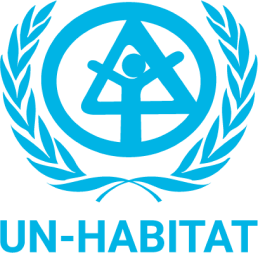Overview
The Global Land Tool Network (GLTN) is a dynamic and multisectoral alliance of international partners committed to increasing access to land and tenure security for all, with a focus on the poor and women. The Network’s partners include international civil society organizations, research and training institutions, bilateral and multilateral organizations, and international professional bodies.
The Network develops, disseminates and implements pro-poor and gender-responsive Land Tools. These tools and approaches contribute to land reform, good land governance, inclusive land administration, sustainable land management, and functional land sector coordination.
Conventional approaches to land administration often fail to deliver the systemic and inclusive change urgently required, especially for the poor and vulnerable. It is estimated that the conventional land governance systems in many developing countries cover only about 30% of land – which is only a small proportion of the population, leaving out the often poorer majority. GLTN advocates for the recognition of a broader range of land rights and relationships to land including tenure security. These include individual, informal, customary, or group rights. Recognition of this important reality is at the heart of our work.
“I now have peace of mind knowing that no one can evict me from my property.”
ー Resident, Kanyama Settlement in Lusaka, Zambia
UN-Habitat’s Contribution
GLTN’s underpinning values and operational principles have human rights at their core. Our values are social justice and equity, strength in diversity, reciprocity, and transparency.
GLTN develops tools that benefit all, with special attention to the poor, the women and disadvantaged people. Land tools are pro-poor and gender responsive if they have the following features:
Affordable – The overall cost of the tools should be affordable for both the poor (if they are required to pay user and maintenance fees) and the government or other bodies that manage the tool.
Equitable and gender-responsive – The land tools should address everyone’s needs fairly while paying particular attention to inequalities faced by women in comparison to men.
Pro-poor – The tools should aim to reduce poverty; they should take the situation and needs of poor people into account and give them a voice in decisions.
Sustainable – It should be possible to implement the tool in the future without large-scale external inputs. Where possible, they should be self-financing through fees or taxes.
Systematic, large-scale -The land tools should be usable at a large scale, be it city-wide or across a whole country, and not just have a one-off, localized use. That means they must be flexible enough to deal with a wide range of situations and can be replicated easily at a minimal cost.
Governance – The process of tool development and implementation should take into account how decisions are made regarding access to and use of land, how those decisions are implemented, and how conflicting interests in land are reconciled. Key elements of this include decision-making conflict resolution, with an emphasis on the process and outcomes.
Subsidiarity – Land tools must be sensitive to local situations and needs, and applicable at the lowest appropriate level of authority, whether by the community or at the lowest level of local government.
Related Links
Global Land Tool Network (GLTN)


